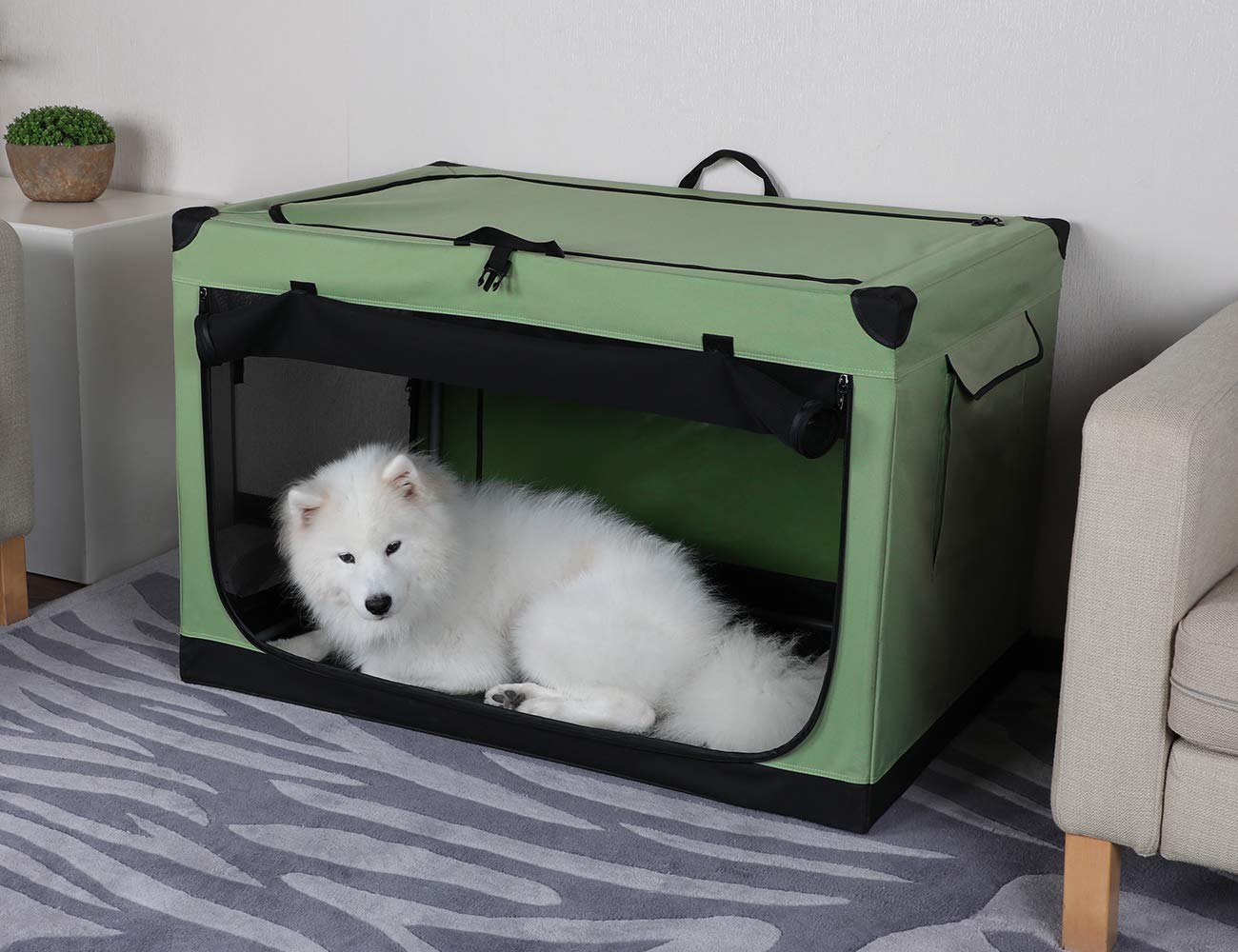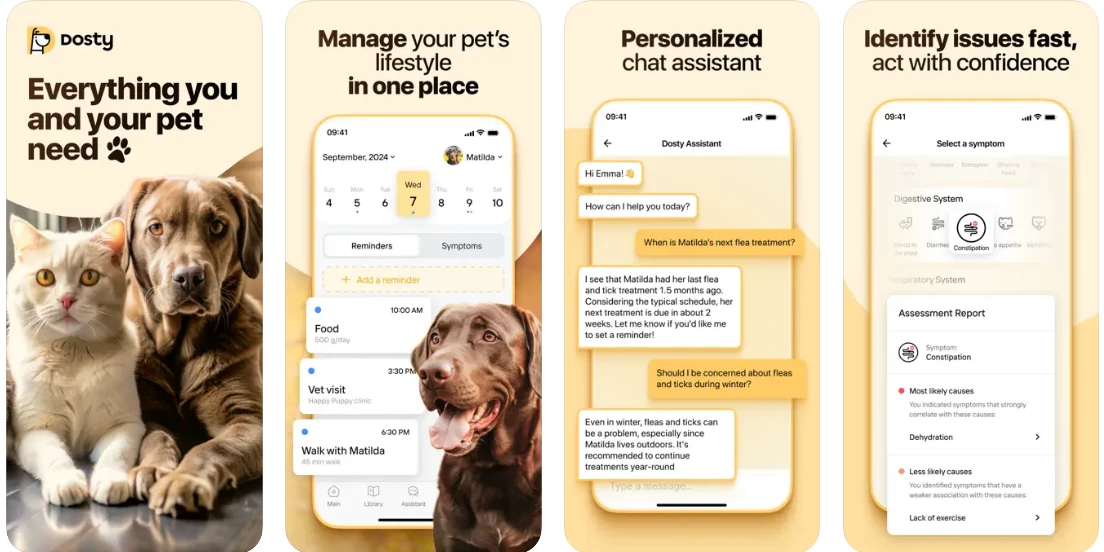On this page
Choosing the Best Dog Crate for Small Spaces
With more than 470 million dogs around the world increasingly live in cities such as London, Sydney, Toronto or Tokyo, where large homes and gardens may be limited, small-space dog care has never been so vital. The best dog crate for small spaces that is reliable is a must-have for pet owners in an apartment, a small house or condo as you seek to keep your pet comfortable without compromising the effectiveness of the crate.
A high-quality dog crate serves several purposes: It’s a space for your dog to sleep, a way to keep them safe and secure during car trips, and a way to confine them during high-activity times in your home, such as while you’re cooking something on the stove. Crates also provide an essential structure and a salutary degree of boundaries for a dog’s emotional equilibrium and security.
When discussing global trends, the statistics provided by the World Pet Association and the Pet Food Institute suggest that 35–40% of dog owners are using crates every single day, for their dog, either to manage behavior, to give rest, or to ensure safety.
DVM, Dr. Tannetje Crocker explains, “Dogs are happiest with predictable space. In a smaller home, that space has to literally be well chosen.”
Having a hard time keeping your dog calm in your small apartment❓
With the Dosty App, you can:
✔ Set daily reminders.
✔ Keep a watch on stress symptoms with symptom tracking.
✔ Receive professional advice through the chat assistant.
✔ Schedule your routines, straight from your phone.
What Type of Dog Crate Is Best for Small Apartments?
The best dog crate for a small apartment is one that is small but functional, matching your dog’s requirement. Crates that double as furniture or fold flat for storage are particularly handy in smaller spaces like studios or shared homes.
Soft-Sided vs. Wire vs. Furniture-Style vs. Plastic Dog Crates
Soft-Sided Dog Crates

- Lightweight and collapsible.
- Perfect for small breeds of calm dogs.
- Not for chewers or anxious dogs.
Wire Dog Crates

- Strong, well-ventilated.
- Often foldable for storage.
- May appear too bulky in clean, minimalistic areas.
Furniture-Style Dog Crates

- Work as end tables or as benches.
- Blends into home décor.
- Larger, and not always portable.
Plastic Dog Crates

- Durable and covered, has a den-like entry.
- Perfect for traveling and anxious dogs.
- Not as easy to incorporate in home decor.
- Downsides less air circulation than wire crates.
Select according to your dog’s size, temperament and how integrated you’d like the crate to be in your living space.
How to Choose the Right Size Dog Crate for Small Spaces?
The most effective dog crate will be the one that meets your dog’s measurements and also relationship your space. A crate that is too large is a waste of space and does not provide the snuggle that dogs crave. Too tiny and it feels cramped and stressful.
Follow this dog crate sizing formula:
- Measure your dog base of the neck to the beginning of the tail; add 2–4 inches.
- Measure height (floor to head or ear) + 2–4 inches.
For those in apartments, the easiest to fit under desks or near beds may be low-profile dog crates under 24 inches tall.
Where Should You Place a Dog Crate in a Small Room?
The placement impacts not only your dog’s comfort but also your room’s utility. A badly positioned dog crate can add stress to your pet and chaos to your home.
Best locations for the dog crate:
Beside a bed or desk.
Beneath a sunny window (or a cover, if necessary).
In a breeze closet, for dogs that like the cave feeling.
Avoid placing dog crates:
Next to heating vents, noisy electronics, or direct sunlight.
In hallways or high traffic entrances.
Unstable floors or cold surfaces.
When space is an issue, try a dog crate cover or a crate that coordinates with your furniture to create a less obtrusive setup.
Tips for Keeping a Dog Comfortable in a Small Crate
Comfort changes the concept of a small dog crate from a cage to a safe space. Dogs require soft, breathable and comfortable interiors, especially in smaller crates which have less air flow.
Dog crate must-haves:
- Orthopedic bed or crate mat, cushioned.
- One breathable blanket.
- Two chew-safe toys, or puzzles.
Optional dog crate extras:
- Lavender-infused crate liners.
- White noise machine nearby.
- Chilly pad or soft-sided crate fan for hot summers.
Wash toys and switch bedding weekly for cleanliness. Dogs who have allergies or joint problems may require more frequent cleaning of the crate and thicker padding inside.
FAQs About Dog Crates for Small Spaces
1. Can I use a travel dog crate permanently?
Yes, if it is properly ventilated and durable enough for your dog’s temperament.
2. How long can a dog stay in a crate during the day?
Adult dogs can max out around 4, with pups needing much less.
3. Is it okay to cover a dog crate in small spaces?
Indeed, light, permeable covers will be able to conjure up a more tranquil atmosphere.
4. Can furniture-style crates be used every day?
Yes, if the fit is right, and they are made of non-toxic material.
Conclusion – Create a Safe and Cozy Dog Space, Even in Tight Quarters
Don’t let a little space restrict the health of your dog. The best dog crate is one that fits your dog, and your home, both top and bottom. Regardless of whether you select a collapsible wire crate or a stylish wooden alternative, prioritize safety, comfort and placement.
Final Tips for Dog Crate:
Select a crate style suited for both space and behavior.
Be sure to measure and compare dog crate sizes.
Pair it with some soft, soothing accessories for ultimate comfort.
Move position or orientation in order to ease tension.
🐾 Crate-train and monitor your dog’s comfort through the Dosty App.


